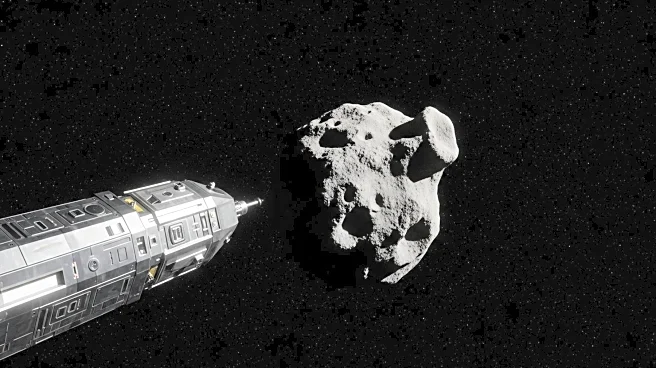What is the story about?
What's Happening?
Astronomers have announced new findings regarding asteroid 1998 KY26, which is set to be visited by the Japan Aerospace Exploration Agency's (JAXA) Hayabusa2 spacecraft in 2031. Recent observations reveal that the asteroid is smaller and rotates faster than previously thought, measuring only 11 meters in diameter and completing a rotation every 5.4 minutes. These findings necessitate a reassessment of the Hayabusa2 landing strategy, as the asteroid's size and spin present unique challenges. The asteroid's characteristics were determined using advanced ground-based telescope observations during its close approach to Earth in 2024. This discovery highlights advancements in asteroid observation techniques and contributes to a better understanding of near-Earth objects.
Why It's Important?
The new measurements of 1998 KY26 are significant for several reasons. Firstly, they provide an unprecedented opportunity to study a near-Earth asteroid of this scale, which could offer insights into its internal structure and composition. Understanding such asteroids is crucial for planetary defense efforts, as they represent the most common objects that could impact Earth and affect human activities. The findings also demonstrate the capabilities of current technology in characterizing small asteroids, which is vital for future missions and potential threat assessments. The Hayabusa2 mission's success in navigating these challenges could pave the way for more complex asteroid exploration missions.
What's Next?
The Hayabusa2 spacecraft is scheduled to rendezvous with 1998 KY26 in 2031, aiming to briefly touch down on the asteroid. This mission will provide valuable data on the asteroid's structure and composition, helping scientists determine whether it is a solid monolithic rock or a rubble pile. Ground-based telescopes will not be able to obtain further data on 1998 KY26 before the mission, but the James Webb Space Telescope might offer additional observations in 2028 and 2029. These observations could confirm the current size estimate and provide clues to the asteroid's temperature and density.
Beyond the Headlines
The discovery of 1998 KY26's characteristics raises questions about its formation and history. If the asteroid is a solid rock, it may have originated from a larger body and been ejected during a collision. Alternatively, if it is a rubble pile, its fast spin could affect its ability to retain surface material. These scenarios will be explored further once Hayabusa2 reaches the asteroid. Understanding 1998 KY26 could also contribute to broader knowledge about the population of near-Earth asteroids and their potential risks to Earth.
AI Generated Content
Do you find this article useful?















